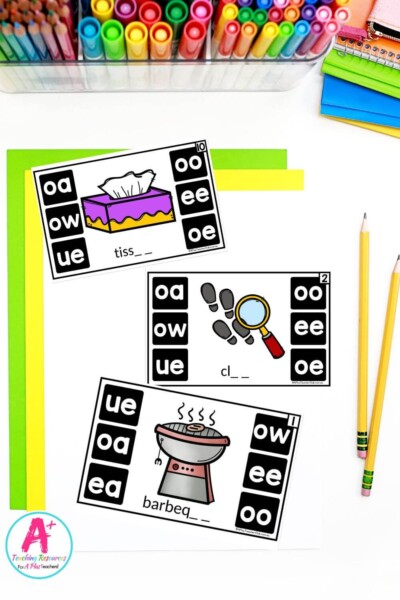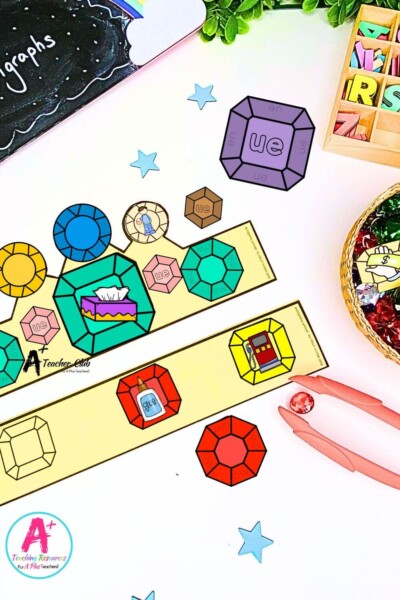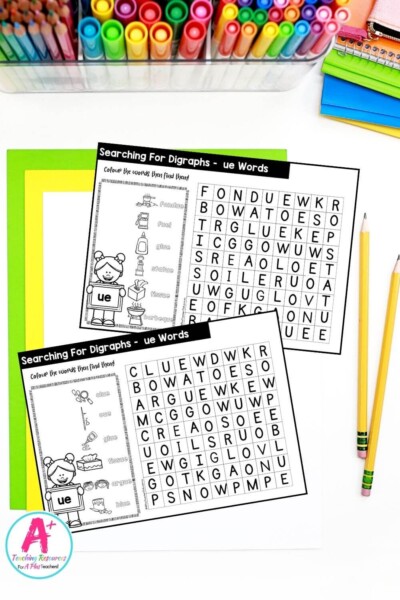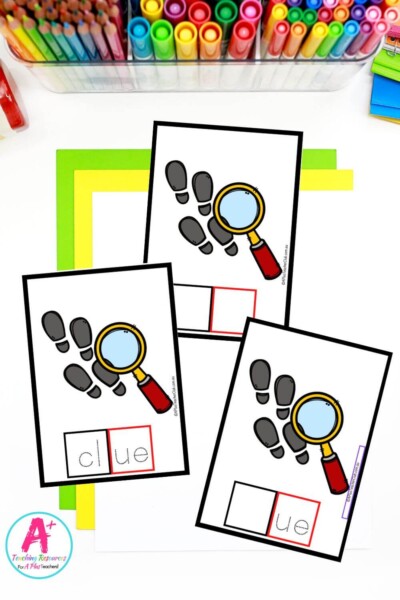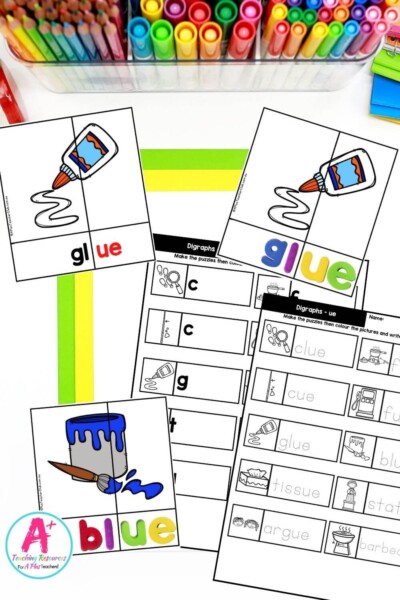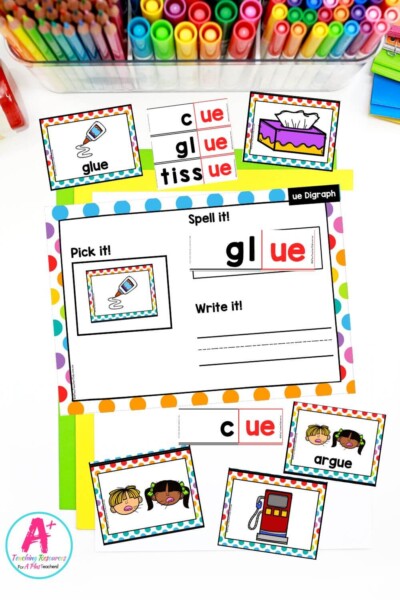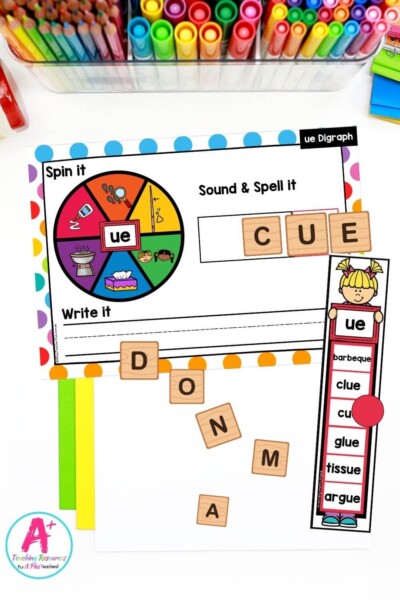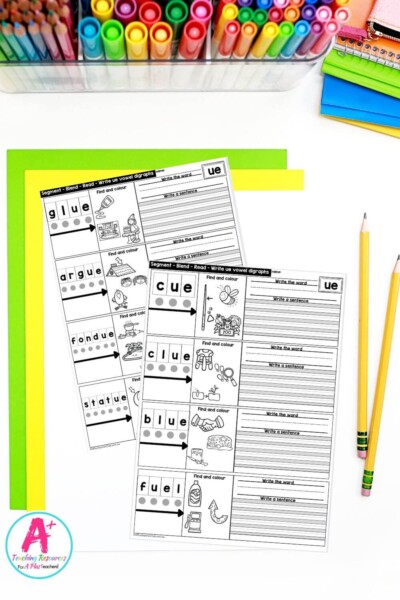ue Digraph Activities
Phonics, Spelling, & Grammar Resources
Are you on the hunt for dynamic ways to teach the “ue” digraph sound? Our “ue” Digraph Activities collection is tailored for effective phonics learning. With interactive digital games, worksheets, hands-on phonics games, and word-building exercises, we cater to all learning styles and levels. Kindergarten to first grade and beyond, these activities ensure mastery of “ue” words. Let’s make phonics skills soar effortlessly!
Vowel Team or Vowel Digraph?
Alright, let’s break it down for you educators! When we talk about vowel teams versus vowel digraphs, it’s all about understanding how those letters work together in words.
Vowel teams, like “ea” in “seat,” have two vowels side by side, each making its own sound. Now, vowel digraphs are a bit different—they’re two letters that come together to create one sound, such as “ow” in “cow.”
Now, what about “ue”? It’s a vowel digraph too!
Think about “blue” or “rescue.” That “u” and “e” team up to make one sound. Knowing this helps us tailor our phonics lessons to really nail those tricky English spelling and pronunciation rules!
Teaching “ue” Vowel Digraphs
When teaching “ue,” the goal is to help students grasp how these two letters team up to create a single sound, as heard in words like “blue” and “rescue.”
So, why teach it? Well, understanding “ue” digraphs aids students in recognising and decoding words more accurately, ultimately boosting their reading and spelling skills. As for timing, it’s best introduced after students have a solid grasp of single-letter vowel sounds, typically around kindergarten or first grade.
When diving into teaching “ue,” keep it engaging! Use visuals, hands-on activities, and word games to make learning fun and memorable. By incorporating “ue” into your phonics lessons, you’re empowering your students to become confident readers and spellers!
ue Vowel Digraph Confusions
Kids can find the “ue” sound a bit puzzling, mainly because English spelling can be tricky! One common source of confusion is when “ue” doesn’t make the sound they expect.
Take words like “plague” or “league,” for example. Here, “ue” doesn’t sound like the typical “oo” in “blue.” Another challenge pops up when “ue” remains silent, like in “cue” or “guest.”
Adding to the mix, some words with “ue” may have different pronunciations, like “due,” which can sound like “doo” or “dyoo.”
To add to the confusion, there are other digraphs that can replace “ue” in certain words. For instance, the “ew” combination sometimes makes the same sound as “ue,” as seen in words like “few” or “new.”
Similarly, words where we expect “ue” might instead feature the “oo” digraph, as in “true” or “rue.”
Helping kids spot these patterns and understand the different ways “ue” can be used can untangle the confusion and boost their confidence in reading and spelling.
ue Vowel Digraph
We have put together a stack of teaching resources to help you teach the ue digraph. Click + for a list of the ow vowel digraph words used in our resources.
Resources listed in this collection
Click to jump to...-
ue Vowel Digraph Activities Board Game
-
ue Vowel Digraph Activities Strip Reader
-
ue Vowel Digraph Activities Clip Cards
-
ue Vowel Digraph Activities Write it Mats
-
ue Vowel Digraph Activities Crowns
-
ue Vowel Digraph Activities I Spy
-
ue Vowel Digraph Activities Word Search
-
ue Vowel Digraph Activities Student Book
-
ue Vowel Digraph Activities Flash Cards
-
ue Vowel Digraph Activities B&W 2 Piece Puzzles
-
ue Vowel Digraph Activities Colour 2 Piece Puzzles
-
ue Vowel Digraph Activities Strip Puzzles
-
ue Vowel Digraph Activities Playdough Mats
-
ue Vowel Digraph Activities Word Builder
-
ue Vowel Digraph Activities Spin & Spell
-
ue Vowel Digraph Activities Posters
-
ue Vowel Digraph Activities Worksheets
ue Digraph Activities
Explore tags
More Digraph Activities

ou digraph
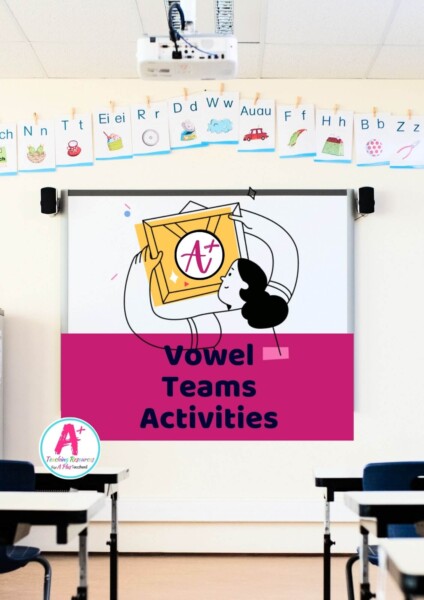
Vowel Teams
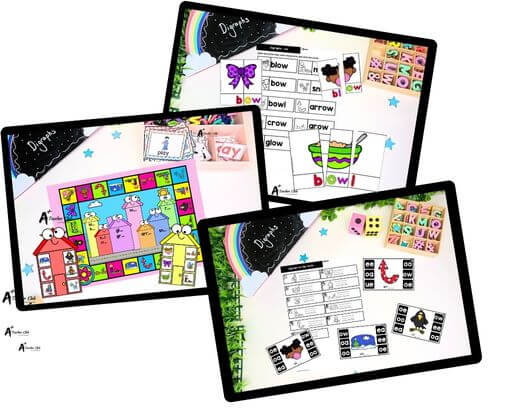
ow digraph

oo digraph
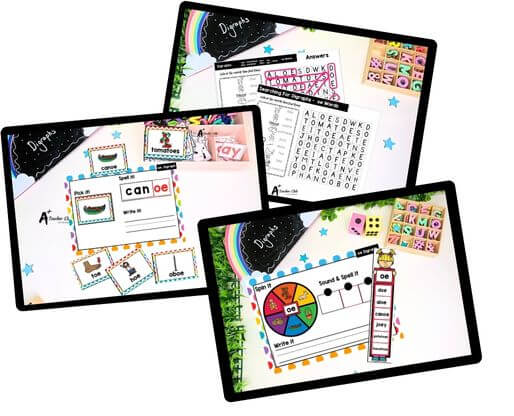
oe digraph

oa digraph

ie digraph

all digraph
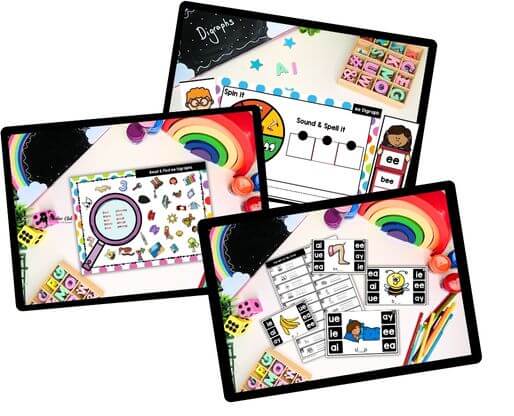
ee digraph

Digi Consonant Digraph Games
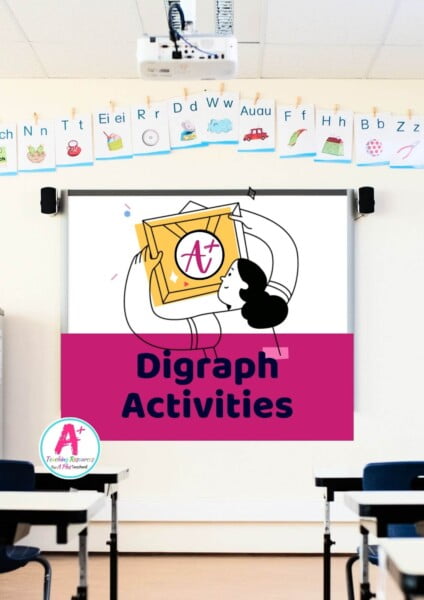
Browse Our Digraph Activities Collection
Can't find what you're looking for?
Send us a request! Use this form to request a resource. Please give details of the learning area, topic, year level, curriculum links. We’ll be happy to take a look to see if we can fit it in. Unfortunately a request does not guarantee we will be able to make it!
"*" indicates required fields



